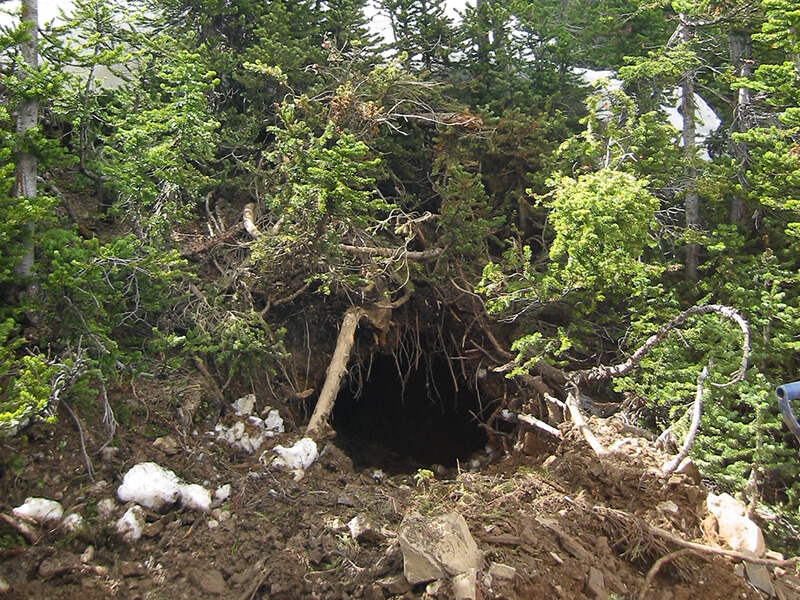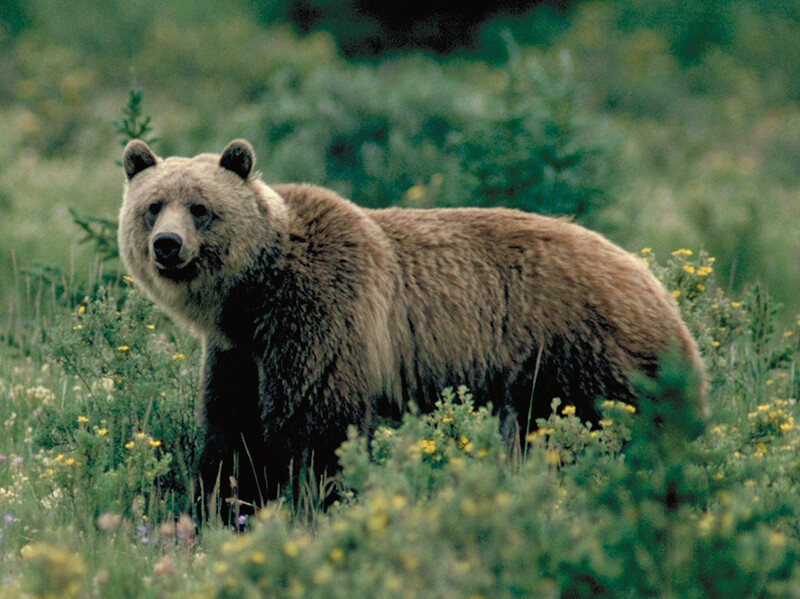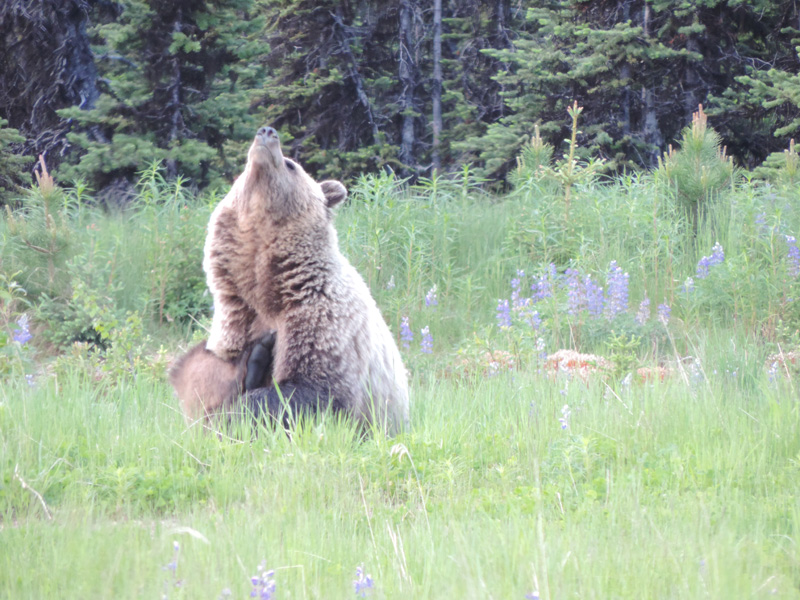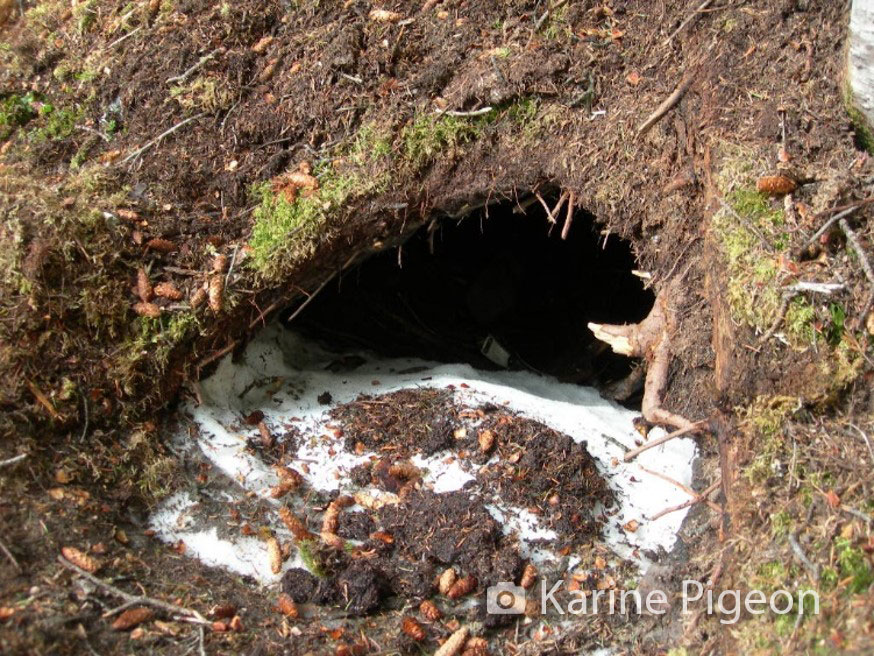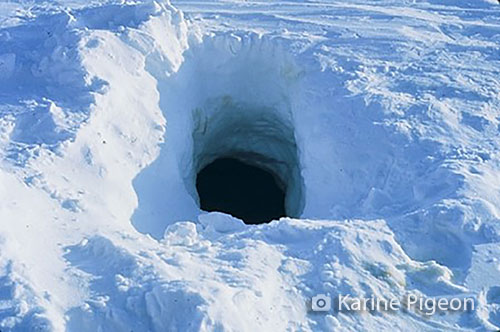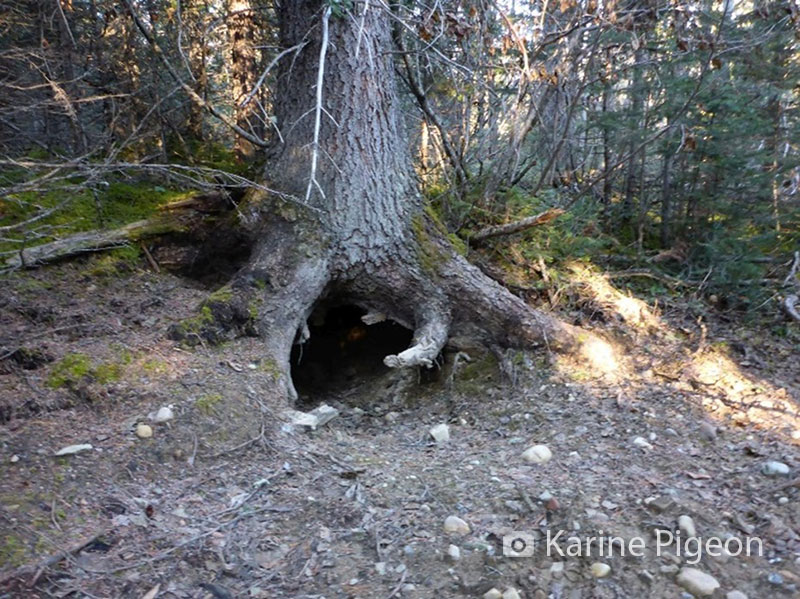
Abstract
Climate-induced changes in the phenology of hibernation for bear species could result in altered energy budgets, reduced cub survival and fitness and increased human-bear conflicts. Using 11 years of data, we determined the amount of variation in den entry and den exit dates that could be attributed to sex and reproductive status, weather and berry availability for 15 male and 58 female grizzly bears (Ursus arctos). We estimated berry availability during autumn using a probability surface of berry productivity within the home range of 13 individuals over 3 years. Sex and reproductive status explained 22 and 14 % of the variation in den entry and den exit dates, respectively. Weather did not influence the timing of den entry but berry availability in autumn explained 39 % of the variation observed in den entry, and high berry availability was associated with late den entry. Elevation and spring temperatures, and elevation and winter precipitation, respectively, explained 26 and 21 % of the variation observed in den exit dates. Increasing spring average monthly maximum temperature by 4 °C resulted in bears emerging from dens 10 days earlier and an increase of 1.25 m in snow precipitation delayed den exit by 1 week. We demonstrate that although the phenology of hibernation for grizzly bears depends on sex and reproductive status, den entry appears to be driven by food availability, while den exit is more linked to weather. Extended growing seasons and mild meteorological conditions should result in shorter denning periods for grizzly bears.
Citation
Karine E. Pigeon, Gordon Stenhouse, Steeve D. Côté. 2016. “Drivers of hibernation: linking food and weather to denning behaviour of grizzly bears.” Behavioral Ecology and Sociobiology. doi:10.1007/s00265-016-2180-5
Access the paper (subscription required) here.








